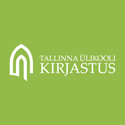Katšanovi üksikpataljon [Russians in the Estonian War of Independence – The Kachanov Single Battalion]
Abstract
By the spring of 1919, the Estonian military forces had driven the Bolsheviks out of Estonia. In June, the Sakala Partisan Battalion, that had been operating in South-Eastern Estonia, as part of the 2nd Division, carried out a liberating sortie into Kachanov Parish in Russia’s Pskov Province. Local Russian peasants, who were fed up with the Bolsheviks’ tyranny, organized a partisan unit, and joined up with the Estonians. Throughout the summer, they fought valiantly, to protect their home against the Red Army.
In July 1919, the Estonian Army recruited its 2nd Rifle Regiment from amongst the men of Kachanov Parish. Th e unit was disbanded after the Estonians abandoned Pskov and left it to the Red Army. On 17 September 1919, on orders from the Commander-in-Chief of the Estonian Armed Forces, Major-General Johan Laidoner, began the formation of the Kachanov Single Battalion from amongst Russians wanting to fight against the Bolsheviks, under the Estonian flag. Due to the complicated situation that existed on the front, the Battalion was immediately sent into combat. The unit, consisting of 1,000 enlisted men and officers, under the command of Captain Artur Saueselg, fought against the Red Army, in the Pskov area, as part of the Estonian 2nd Division.
By the time of the concluding of the truce on 3 January 1920, the Kachanov Battalion had participated in several operations. Starting on 25 September 1919, the Battalion functioned as part of the Irboska Army Group, alongside the Sakala Partisan Battalion. Starting on 7 October, the Kachanov Battalion took part in the White Russian Bulak-Balachowicz Battalion’s off ensive towards Ostrov, and, starting on 29 October, along with the 3rd Infantry Regiment, supported the 3rd Division’s off ensive against the Bolsheviks.
Between the 1 September and the 31 December 1919, the Kachanov Battalion lost at least 78 men as killed, wounded, or missing in action. In the course of several operations, the unit managed to demonstrate its high morale. 16 of its men, one of them an officer, were awarded the Estonian Freedom Cross for their outstanding achievements in battle.
After the concluding of the Tartu Peace Treaty, on 2 February 1920, the Kachanov Battalion was stationed in the Southern Estonian county of Petserimaa, where it was demobilized. Aft er the end of the Estonian War of Independence, Kachanov Parish ended up being part of the Republic of Latvia, which had also just gained its independence. Therefore, the majority of the freshly demobilized men of the Battalion moved to Latvia. Although several of them remained in Estonia, settling in Petserimaa
County. A few of the Russian soldiers continued to serve in the military, in either the Estonian or Latvian Army. But some of the men of the Kachanov Battalion ended up in Soviet Russia. Some of them went there out of choice, while others were sent out of Estonia on the basis of the Tartu Peace Treaty, as foreign citizens who had been born in Russia.
Full Text:
PDFRefbacks
- There are currently no refbacks.
Kirjastaja / Published by:

ISSN 2228-0669 (trükis / print)
